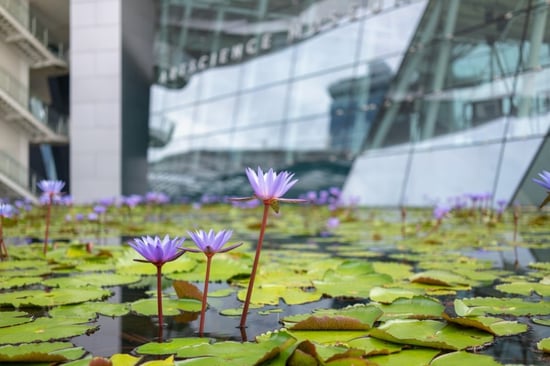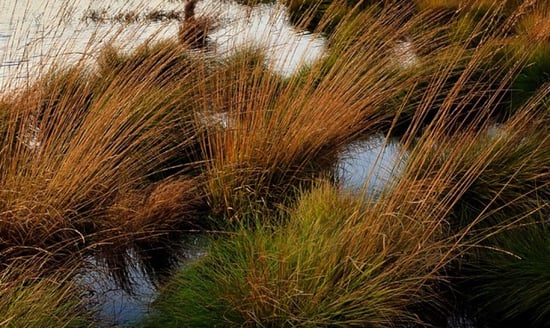
You’ve heard of a wetland, and you know what floating is. But how can a wetland … float? We’re here to answer that question, so grab that coffee and start scrolling.
No one needs to tell you that water pollution is a big issue.
(Or at least, we hope they don’t. Because it’s Kind of a Big Thing these days.)
The trouble is, water pollution is astoundingly common. Our lakes, rivers and oceans are devastated by chemicals.
We’re not just talking the toxic runoffs from water treatment plants or industrial factories, either. Nutrients from fertilizers, which are seen as “good” by the agricultural sector, also wreak havoc on waterways. They’re poisoning our drinking water and even dosing our fish with antianxiety drugs.
Why? Because those fertilizers that make plants grow also make algae grow, which then uses up all the oxygen and chokes out other plant and animal life. You know all those green lakes you see when you fly over Florida? Yeah, that’s what’s going on.
The result: Bodies of water that are chemical-ridden, inhospitable to wildlife and sometimes straight-up poisonous. And that’s before stormwater rushes in, carrying toxins and disease with it.
We need to clean our water bad … but which types of green infrastructure can get the job done?
Enter the floating wetland.
What Exactly Is a Floating Wetland?
 Wetlands are giant “bioscrubbers,” tiny ecosystems that take up chemical inputs and nutrients, break them down and lower the number of harmful compounds in our waterways.
Wetlands are giant “bioscrubbers,” tiny ecosystems that take up chemical inputs and nutrients, break them down and lower the number of harmful compounds in our waterways.
And they work real well. Some smart person thought, Instead of bringing water to wetlands, why not bring the wetlands to our water?
It’s brilliant. A floating wetland is essentially a tiny ecosystem created on top of a buoyant surface, then sent out into an aquatic habitat. By “planting” water plants on a floating medium, you enable them to travel around a pond or lake, soaking up nutrients and converting them to oxygen.
Moreover, because we can manage these little floating islands so easily, we can trim off dead plant matter – avoiding the creation of more biomass in the waterway – and keep the plants younger. Since younger plants feed more prolifically, therefore sucking up more nutrients, that’s a major benefit.
So, where can we put these to use? The shorter answer is everywhere.
Who Can Benefit from Floating Wetlands?
 This is a fun idea for a residential home or municipal courtyard, to be sure. Floating mats of lilies, rushes and reeds are nothing short of adorable.
This is a fun idea for a residential home or municipal courtyard, to be sure. Floating mats of lilies, rushes and reeds are nothing short of adorable.
But the bigger market is industrial and municipal wastewater treatment, anyone who has certain environmental standards to maintain. They have a limit to contaminants and suspended solids mandated by the EPA, and the only way to keep those limits in check are implementing filtration systems, digging a bigger pond or using phyto-remediation (cleaning services provided by plants). It’s our humble belief that the latter is best.
Homeowners associations are always fighting algae too, a result of all the landscaping they do. The introduction of floating wetlands could help them clean up ponds and waterways without using harsh chemicals to do it.
Here at Ecogardens, we’re working on the best possible approach to floating wetlands, and are really excited about some of the tricks we’re coming up with. Interested in learning more about how this sustainable, green solution can fit your needs? We've got you covered.
Schedule a free 30-minute consultation with our team (over a Zoom!) and we'll discuss your unique property, your options, specific do's and don'ts for incorporating a Floating Wetland into your environment, and more. Together, let’s build an island.

